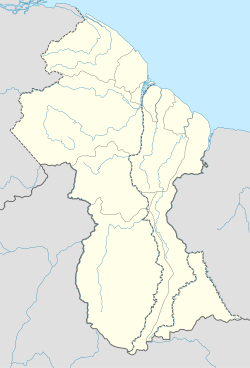Zeelandia | |
|---|---|
Village | |
| Coordinates: 7°01′N58°27′W / 7.017°N 58.450°W | |
| Country | |
| Region | Essequibo Islands-West Demerara |
| Population (2012) [1] | |
• Total | 211 |
Zeelandia is a village on Wakenaam, in the Essequibo Islands-West Demerara region of Guyana. The village is named after the sugar plantation Zeelandia. [2]
Located at the extreme northern end of the island facing the Atlantic Ocean, Zeelandia is a fishing village. The area is subject to land degradation and flooding. [3]
Zeelandia is also home to many agricultural farms, growing items such as rice, coconut, and various other fruits and vegetables. [2]
